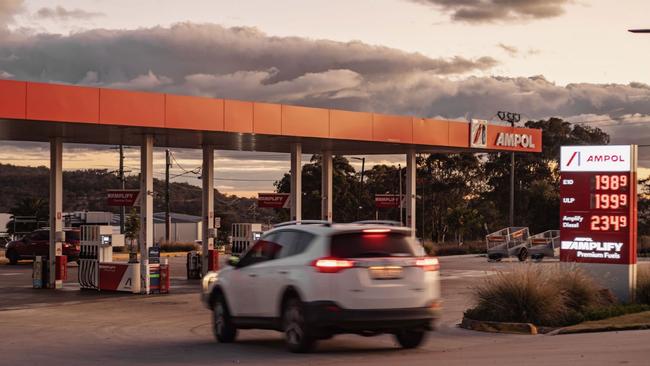
The $9bn Australian fuel refiner and retailer Ampol is believed to be weighing an acquisition of EG’s portfolio of Australian service stations.
It comes at a time that Ampol’s share price is on a tear and the company has built a trusted reputation among shareholders when it comes to mergers and acquisitions, following the success of its $NZ2bn Z Energy purchase in 2021.
Should Ampol emerge with EG, it will probably need to sell some service stations to appease the competition regulator – particularly after the federal government granted the Australian Competition 7 Consumer Commission new merger powers in a quest to reduce market concentration and increase competition.
Ampol competitor Viva Energy purchased the On The Run fuel retail business last year for $1.15bn.
It’s no secret that EG has been open to an exit from for some time.
DataRoom reported in 2021 that it was considering an initial public offering on the ASX.
At that time the British company, which operates in Europe, the US and Australia, was keen to reduce its debt after an aggressive acquisition spree over four years that had taken its global portfolio to more than 6000 sites.
Back then Barrenjoey was thought to be close to EG and Rothschild & Co, Goldman Sachs, Morgan Stanley and Barclays had assessed strategic options, including a float of the global business.
At the time Ampol was believed to be prepared to take a look at the business, but observers believed it would only pay an opportunistic price.
EG fought off competition to buy a portfolio of 540 fuel convenience sites from Woolworths in 2018 for what was considered an aggressive price of $1.7bn.
Despite the growing trend towards vehicles using clean energy, service stations are expected to remain important for the distribution of clean fuels such as hydrogen.
EG itself lobbed a $3.9bn bid for the Ampol convenience retail business early in 2020, but it was rejected.
Woolworths put the petrol stations that EG now owns up for sale after running an earlier sales process.
BP won the competition with a $1.8bn offer but the ACCC blocked that transaction.
In that contest Ampol (then named Caltex Australia) was an underbidder.
Instead, Ampol entered into a fuel supply transaction with Woolworths.
EG was founded in 2001 by brothers Mohsin and Zuber Issa.
Its earnings before interest, tax, depreciation and amortisation last year fell 7 per cent to $US1.1bn on the back of oil volatility and stronger fuel performance in the prior year as it embarked on asset sales and focused on deleveraging the balance sheet.
Last year Ampol reported a 25 per cent fall in net profit to $549.1m, dragged down by significant items.
It said it had $2.1bn of net debt and would participate in industry consolidation opportunities.
JPMorgan analysts said in research released last week that EG could generate between $450m and $500m in annual EBITDA.
“At six to eight times enterprise value to EBITDA, it would mean a valuation of $3bn to $4bn, while precedent transaction multiples in Australia would put a value of substantially less than that,” the analysts said in a note.
“We estimate a break-even price would be $3.3bn while a transaction by Ampol would likely need to be at least partly funded by equity.”
The analysts said precedent transaction multiples of $2.7m-$2.8m per store implied a value of just $1.5 billion, which was actually lower than what EG paid.
“We believe this transaction at a price of $3.3bn or below would be value-accretive for Ampol.”
With cash, the debt to equity would increase to 62 per cent while net profit would increase by 20 to 30 per cent.
The $9bn Australian fuel refiner and retailer Ampol is believed to be weighing an acquisition of EG Group’s portfolio of Australian service stations.
It comes at a time that Ampol’s share price is on a tear and it has built up a trusted reputation among its shareholders when it comes to mergers and acquisitions following the success of its $NZ2bn Z Energy purchase in 2021.
Should Ampol emerge with the business, it would likely need to sell off some service stations to appease the competition regulator.
Its competitor Viva Energy purchased the On The Run fuel retail business last year for $1.15bn.
It’s no secret that EG Group has been open to an exit for some time from Australia.
At that time, the British company, which operates in Europe, the US and Australia, was keen to reduce its debt after an aggressive acquisition spree over four years that had taken its global portfolio to more than 6000 sites.
At that time, Barrenjoey was thought to be close to EG Group, and Rothschild & Co, Goldman Sachs, Morgan Stanley and Barclays have assessed strategic options, including a float of the global business.
At that time, Ampol was believed to be prepared to take a look at the business, but market experts believe that it would only pay an opportunistic price.
EG fought off competition to buy the portfolio of 540 fuel convenience sites from Woolworths in 2018 for what was considered an aggressive price at $1.7bn.
Despite the growing trend towards vehicles using clean energy, service stations are expected to remain important for the distribution of clean fuels such as hydrogen.
EG itself lobbed a $3.9bn bid for the Ampol convenience retail business early in 2020, but it was rejected.
Woolworths placed the petrol stations that EG now owns up for sale after running an earlier sales process.
BP won the competition with a $1.8bn offer but the ACCC blocked the transaction.
In that contest, Ampol (then named Caltex Australia) was an underbidder.
Instead, Ampol entered into a fuel supply transaction with Woolworths.
EG was founded in 2001 by brothers Mohsin and Zuber Issa.
Its earnings before interest, tax, depreciation and amortisation last year fell 7 per cent to $US1.1bn on the back of oil volatility and stronger fuel performance in the prior year as it embarked on asset sales and focused on deleveraging the balance sheet.
Last year Ampol reported a 25 per cent fall in net profit to $549.1m, dragged down by significant items.
It said it had $2.1bn of net debt and would participate in industry consolidation opportunities.
JPMorgan analysts said in research released last week that EG Group could generate between $450m and $500m in annual EBITDA.
“At six to eight times enterprise value to EBITDA, it would mean a valuation of $3bn to $4bn, while precedent transaction multiples in Australia would put a value of substantially less than that,” the analysts said in a note.
“We estimate a break even price would be $3.3 billion while a transaction by Ampol would likely need to be at least partly funded by equity.”
The analysts said precedent transaction multiples of $2.7-$2.8m per store implied a value of just A$1.5 billion, which was actually lower than what EG Group paid.
“We believe this transaction at a price of $3.3 billion or below would be value accretive for Ampol.”
With cash, the debt to equity would increase to 62 per cent while net profit would increase 20 to 30 per cent.




To join the conversation, please log in. Don't have an account? Register
Join the conversation, you are commenting as Logout